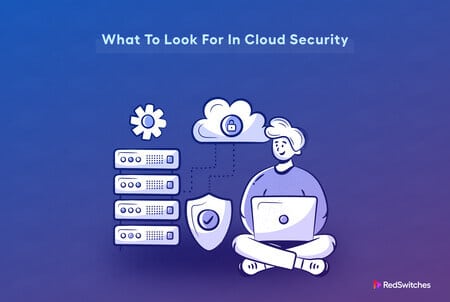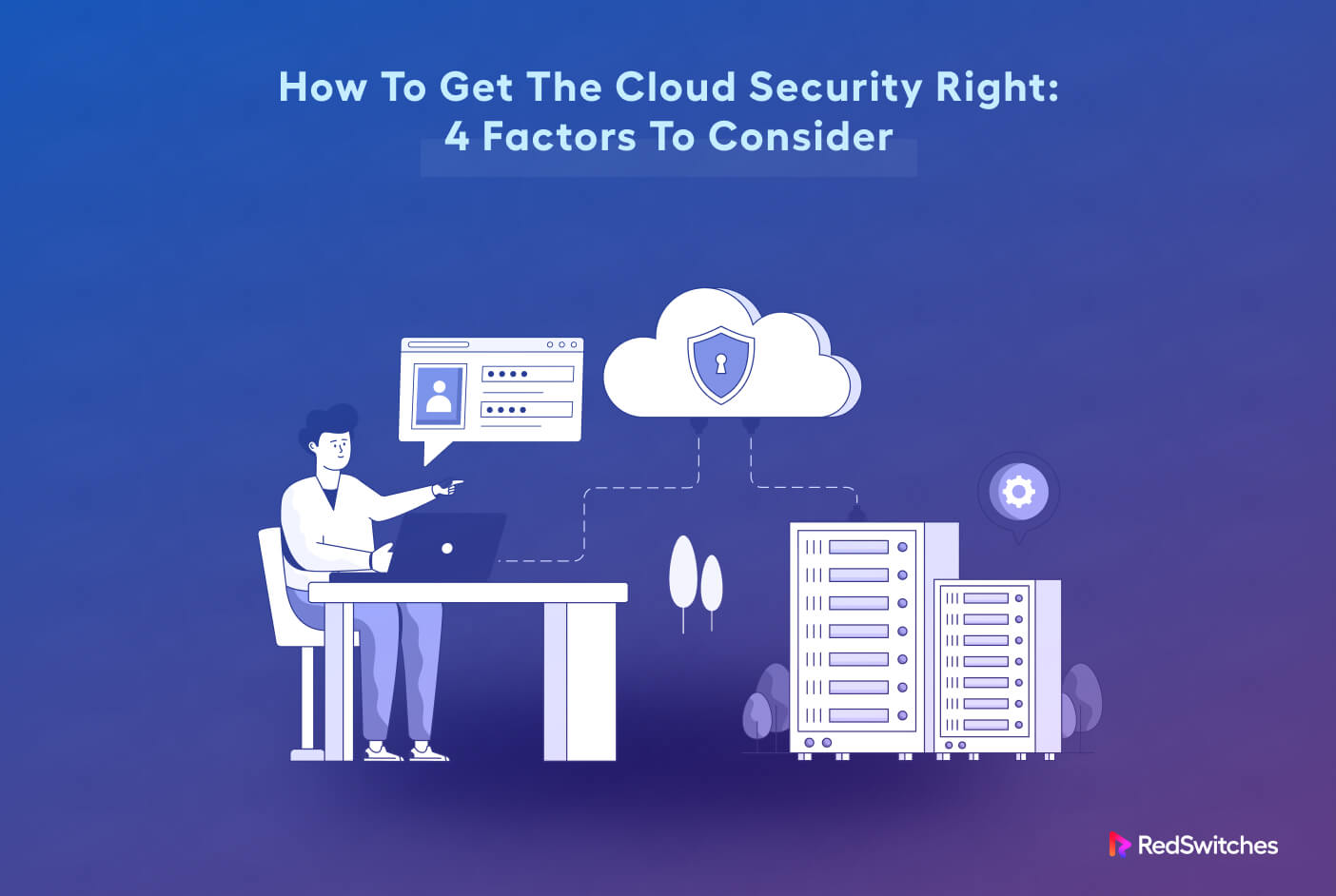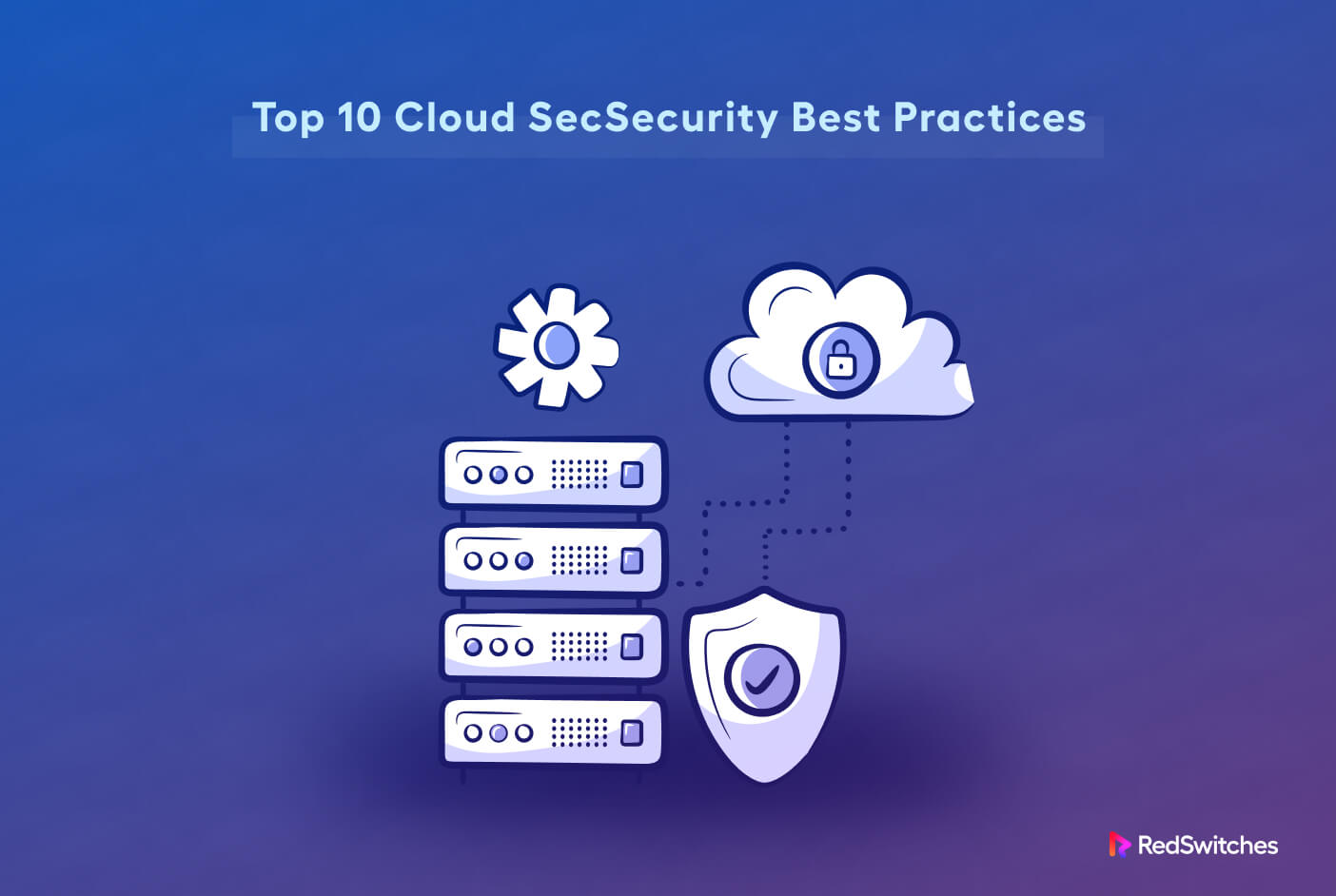Businesses and individuals rely on cloud services to improve communication, streamline processes, and increase efficiency. Cloud platforms’ ease of use and scalability, including various types of cloud computing, have changed how we manage, process, and use data. But with this increasing reliance on cloud services comes a host of security challenges related to data protection and the robustness of cloud computing infrastructure.
Businesses now have a critical need for robust security measures that facilitate access to data without compromising essential operations and user information. As you can imagine, threats resulting in possible data breaches, unauthorized access, and losses due to vulnerability exploits are serious challenges.
In this article, we will explore the critical question of what to look for in cloud security, including a detailed examination of the differences between cloud computing vs utility computing. We’ll discuss the key factors of great cloud security and the best practices your cloud hosting provider must follow to ensure ironclad security for your business operations.
Table Of Contents
- Key Factors To Consider in Cloud Security
- The 10 Best Practices for Cloud Security
- Best Practice No 1: Regular Security Audits and Assessments
- Best Practice No 2: Enable Multi-Factor Authentication (MFA)
- Best Practice No 3: Secure Configuration Management
- Best Practice No 4: Data Backups and Disaster Recovery
- Best Practice No 5: Employee Training and Awareness
- Best Practice No 6: Vendor Security Assessment
- Best Practice No 7: Incident Response Planning
- Best Practice No 8: Data Classification and Access Controls
- Best Practice No 9: Encryption for Data in Transit and at Rest
- Best Practice No 10: Set up Intrusion Detection Systems
- RedSwitches: Your Secure Hosting Partner
- Conclusion
- FAQs
Key Factors To Consider in Cloud Security
A security-conscious cloud hosting provider should have the following four factors/features built into their platform. These factors contribute to the security of the cloud servers hosted business processes and data.
Data Encryption and Protection
Encryption is crucial for both preventing and lessening the impact of a data loss incident. The provider should have Federal Information Processing Standards (FIPS) 140-2 certified hardware for top-tier security.
This is significant because Level 4 certification offers the best anti-tampering defense in the industry, ensuring that user data remains protected in a security incident.
Identity and Access Management (IAM)
IAM is a set of cloud services that controls and manages user and resource access and authorization, including in the context of cloud VPS hosting. IAM policies are permissions that may be applied to users or cloud resources to control who has access to what and how.
IAM plays a significant role in ensuring security for services that interact with critical resources and data. The role of IAM policies becomes critical in scenarios that deal with data access and manipulation, making it vital in addressing cluster computing vs cloud computing distinctions. For instance, IAM policies control access during the process initiated by activating a lambda process by an SNS topic. The access privileges kick in as the Lambda function tries to insert a record into a DynamoDB table, highlighting its importance in navigating cloud security challenges effectively.
Network Security and Segmentation
Network segmentation is the process that divides a larger business network into smaller, distinct sub-networks. This allows network teams to compartmentalize the sub-networks and provide exceptional, unique security controls and services to each sub-network, highlighting the critical importance of addressing the difference between mainframe and cloud computing when designing security measures.
Network segmentation gives each network section its security services and parameters. As a result, the admins have better control over network traffic and can manage network performance and security posture. This level of control is one of the many benefits of cloud computing, as it allows for a tailored and secure network infrastructure.
Improved security is the primary objective, as everyone knows your security is only as strong as its weakest link. Unavoidably, a vast flat network exposes a sizable attack surface. However, by implementing network segmentation as part of a comprehensive strategy for application development in cloud computing, organizations can significantly reduce this attack surface and prevent the lateral spread of malware and similar attacks across the network.
Compliance and Regulatory Adherence
It is impossible to exaggerate the significance of cloud security compliance. Depending upon the nature of operations and the industry they operate in, businesses are under greater scrutiny than ever to ensure their cloud service complies with the relevant regulatory standards.
Enforcement of cloud security compliance is a critical component of data protection. The compliance helps secure sensitive data from breaches and other security dangers.
The 10 Best Practices for Cloud Security
After discussing what to look for in cloud security and the key factors you should consider when shortlisting cloud hosting providers, we will review the ten best practices for cloud security.
Best Practice # 1: Regular Security Audits and Assessments
Experts advise that all businesses should perform penetration testing and vulnerability assessments, regardless of whether they decide to work with an external security agency or keep security services in-house.
Cloud vulnerability scanners can uncover misconfigurations and other issues that could endanger your cloud environment. Similarly, penetration testing helps businesses decide whether cloud security measures adequately safeguard data and applications.
Businesses should also perform routine security audits that examine the capabilities of all security components provided by internal and external vendors. These audits are often an essential requirement in compliance evaluation processes.
Auditing access logs is another crucial step in ensuring that only authorized individuals and processes can access deployed applications and sensitive data.
Best Practice # 2: Enable Multi-Factor Authentication (MFA)
The impact of hostile actors accessing sensitive data can be significantly decreased by setting up multi-factor authentication (MFA) at all access points. This simple step ensures that even if hackers have the user credentials, they won’t be able to log into the application’s backend. You should consider stronger MFA options, such as biometric scans or one-time authentication tokens for securing critical components.
Additionally, businesses should consider an IAM solution that operates in hybrid settings, including cloud deployments and private data centers. ICT security teams use these solutions to implement access policies throughout the business’s IT environments and authentication for end users for need-based access to critical information and processes.
Best Practice # 3: Secure Configuration Management
Security configuration management allows businesses to spot incorrect default system settings.
The National Institute of Standards and Technology states that the purpose of security configuration management activities is to manage and monitor information system configurations to ensure secure operations without any hitches.
Best Practice # 4: Data Backups and Disaster Recovery
Regular data backups are crucial for disaster recovery in a cloud environment. For the fastest recovery, keep backups in several places and verify them frequently to ensure they function correctly. You should also consider encryption backup archives that contain sensitive data to safeguard from unauthorized access.
It’s essential to regularly evaluate your disaster recovery strategies to make sure they function as intended and are relevant to the current business operations and requirements. This entails testing your recovery procedures and executing simulations of potential security incidents. This way, you can find any flaws or weaknesses in your system and modify your disaster recovery plans.
Best Practice # 5: Employee Training and Awareness
Organizations should train their employees to identify cybersecurity threats and initiate proper responses to prevent hackers from accessing critical data and processes.
A thorough training program should cover complex issues like risk management and fundamental security knowledge like setting a strong password and recognizing potential social engineering attacks.
Well-rounded cloud security training should teach staff members about the dangers of shadow IT. These training sessions should highlight the security loopholes these unauthorized tools and products introduce within the cloud computing environment.
Best Practice # 6: Vendor Security Assessment
The security of your data and business operations isn’t exclusively dependent on internal efforts. Third-party services and providers also significantly shape the security posture of your business activities.
That’s why you should be well aware of the third-party services that your cloud provider uses for their operations and service delivery. Any security concerns with these services could potentially affect your business.
Best Practice # 7: Incident Response Planning
Organizations with a cybersecurity incident response plan are better prepared to address the situation, minimize operational disruptions, and reduce the incident’s overall impact on their users.
The response plan should be situation-specific and detailed to include the roles and responsibilities of team members. The plan should focus on quick recovery from the incident and securing data.
Plans for incident response are created to guarantee that your security teams respond to attacks in the most effective way possible. The idea is to get the operations back online in minimum time without losing data.
Best Practice # 8: Data Classification and Access Controls
All data a business collects should be classified based on the nature, sensitivity, and impact of its loss (changed, stolen, or destroyed) on the organization. This classification helps the business assess its data, identify potential vulnerabilities, and place measures to lessen risks.
Data classification is essential for SOX, HIPAA, PCI DSS, and GDPR compliance requirements in some industries.
Best Practice # 9: Encryption for Data in Transit and at Rest
Encryption is a crucial cloud security pillar, protecting data in transit and at rest.
All sensitive information should be protected using on-platform encryption to allow access to authorized users with the necessary decryption keys. This crucial layer of security is essential for protecting your digital assets from emerging threats.
We suggest using SSL/TLS certificates across all applications and strong encryption for data stored in connected storage devices.
Best Practice # 10: Set up Intrusion Detection Systems
Several distinct service models can be used to deploy a cloud IDS.
An IDS is a cybersecurity tool that detects and warns about incoming security threats. This system could be network- or host-based and is implemented inline or configured to listen on a network tap. IDS can combine signature-based and anomaly-based detection to find potentially hostile threats, raise alarms, or initiate pre-programmed preventive measures.
Cloud IDS can be deployed using a Secure Access Service Edge (SASE) solution as a Software as a Service (SaaS) offering or as a part of a Next Generation FWaaS. This system integrates cloud-based IDS with SD-WAN capability and a network security stack.
RedSwitches: Your Secure Hosting Partner
You cannot overemphasize the need for trustworthy and safe hosting in a world that is becoming increasingly digital and where data security is paramount.
RedSwitches is your partner in delivering cutting-edge and reliable cloud solutions built to defend your digital environment from attacks and weaknesses.
We are at the forefront of delivering reliable and secure bare metal hosting solutions trusted by thousands of customers. Our bare metal servers are protected by multiple security measures, and we help our customers build secure infrastructure for their applications.
Get in touch today and let our experts help you build and maintain secure hosting operations at great prices.
Conclusion
In this blog article, we tried to answer a simple question – what to look for in cloud security, whether you’re considering instant dedicated servers, dedicated servers, or even bare metal servers as part of your cloud infrastructure.
Knowing what to look for in cloud security is the basis of building and maintaining a stable digital environment, whether you’re considering a 10 Gbps dedicated server for high-speed data processing or a Miami dedicated server for low-latency hosting solutions in a specific geographic area.
We discussed the critical components that can make or break the security of your data and applications in the context of cloud security. Additionally, for businesses seeking to enhance their cloud security posture, we’ve offered a thorough roadmap, including insights into best practices for cloud security and considerations such as GPU dedicated servers and the importance of Linux hosting in ensuring a robust and secure cloud infrastructure.
FAQs
Q-1) What makes cloud security crucial?
Cloud security is essential for protecting sensitive data, upholding regulatory compliance, avoiding data breaches, and guaranteeing the availability and integrity of resources stored and processed in the cloud.
Q-2) What are the principal dangers to cloud security?
Data breaches, unauthorized access, insider threats, malware, DDoS assaults, and improperly configured security settings are some common dangers.



